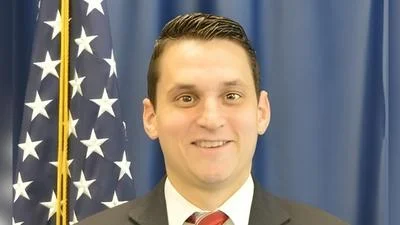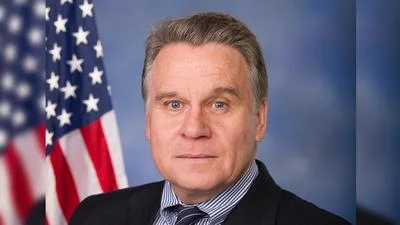The Congressional Record is a unique source of public documentation. It started in 1873, documenting nearly all the major and minor policies being discussed and debated.
“FRENCH NUCLEAR TESTING--NO. 3” mentioning the U.S. Dept. of Energy was published in the House of Representatives section on pages H6027-H6029 on June 15, 1995.
The publication is reproduced in full below:
FRENCH NUCLEAR TESTING--NO. 3
The SPEAKER pro tempore. Under a previous order of the House, the gentleman from American Samoa [Mr. Faleomavaega] is recognized for 5 minutes.
Mr. FALEOMAVAEGA. Mr. Speaker, I rise today in strongest opposition to France's announced resumption of exploding nuclear bombs in the South Pacific.
After decades of work, and through the efforts of peoples of divergent countries throughout the world, we are, or at least we were, moving toward a common goal of removing nuclear weapons from the face of this planet. Last month, the United States, France, and the major nuclear powers promised over 170 non-nuclear nations that the nuclear powers would exercise ``utmost restraint'' with regard to nuclear testing and work toward a comprehensive test ban treaty. Despite reservations, these commitments were accepted at face value by the non-
nuclear nations, which are the vast majority of the countries of the world, and it was only with their support that permanent extension of the Nuclear Non-Proliferation Treaty [NPT] was gained.
Following in the footsteps of China's nuclear detonation right after the NPT's renewal, a testing
resumption by France would confirm the ugliest fears of the non-
nuclear nations. The implications are quite obvious, and what the French Government is now saying to the international community and especially countries like India, Pakistan, North Korea, Iraq, and Iran is--the nuclear powers in the name of national interest are more than willing to undermine the NPT, and their commitment to nuclear nonproliferation and disarmament is suspect. The French Government is also sending the message that it does not care about the concerns of some 27 million people who live in the South Pacific region--and we should also add some 1.5 million Americans who live in the State of Hawaii, Guam, the Northern Marianas, and American Samoa.
Mr. Speaker, what the French Government is saying is we're going to explode eight nuclear bombs in the middle of the South Pacific Ocean--
and there is nothing you can do about it.
Mr. Speaker, I cannot believe for a minute that the citizens and the good people of France want its government to explode nuclear bombs that will have tremendous negative impact upon the marine environment of the Pacific Ocean. I cannot believe the good people of France will permit their government to exercise poor judgment on such an important and critical international issue as nonproliferation of nuclear weapons. Mr. Speaker, what a reprehensible display of arrogance of power by a major European country that loves to expound upon moral principles of human rights, protection of the environment, and due fairness and equity to all of humanity.
Instead of complying with the spirit of the nuclear Nonproliferation Treaty, France has said, in effect, we still want to ban nuclear testing, we really do, but not just yet. We want to get every possible advantage we can from our testing program before we stop our tests. So please just ignore these eight nuclear bomb explosions, then next year we will sign a treaty to stop further testing.
Mr. Speaker, I suspect that the military establishment of every nuclear power wants to perform more tests of weapons from their nuclear arsenals to ensure the reliability of their systems. But the fact is all of the nuclear powers, except China, have given up this benefit and stopped testing programs in the interest of making the world a safer place to live. The United States has stopped its testing program because it could derive no more benefit from further tests; it stopped testing to encourage other countries to cease their testing. It is only through leadership such as this that we can hope to rid our planet of the most dangerous weapon mankind has devised--the only weapon we have created that can destroy every form of life as we know it.
Mr. Speaker, I want to comment President Clinton and his administration for standing by its commitment to continue this country's ban on nuclear bomb testing, and I also want to commend the United Kingdom for its statement committing to maintain its ban also. Other governments which have already spoken in opposition to France's resumption of testing include Russia, Australia, New Zealand, Japan, Fiji, Austria, and Norway.
The 15 island nations which comprise the South Pacific Forum have also stated their objection to resumed testing, noting that it would be a major setback to relations between France and the region. These South Pacific nations are members of the South Pacific Nuclear Free Zone Treaty [SPNFZ] and have consistently supported all international efforts to prevent and terminate nuclear proliferation.
The people of the South Pacific want nothing to do with nuclear weapons. They know firsthand of the horrors of nuclear testing and have agreed amongst themselves to keep
their part of the planet nuclear-free. Isn't it ironic that the region is about to become not nuclear-free, but a nuclear hazard. This is not happening by the choice of the 27 million people of the South Pacific, but through the arrogance of a European world power, again playing the role of a colonial master to the detriment of peaceful citizens on the other side of the world.
In announcing France's intent to resume nuclear bomb testing, President Chirac has asserted that exploding the series of nuclear bombs is environmentally safe. Mr. Speaker, we have all seen the results of the nuclear explosions during World War II and the devastation they wreaked. Today's bombs are many times more powerful. France's testing program is to involve the detonation of eight nuclear bombs, almost one a month, all under one small, coral atoll. How many tons of dead fish and countless other marine life are going to be sacrificed this time? What about the safety and health conditions of the Polynesians living in the surrounding islands?
My question to President Chirac is, if the testing is so safe, why are the bombs being exploded in the South Pacific--so far away from France? Why were France's early nuclear bomb explosions conducted in Algeria? Why not detonate these bombs under French soil? If they are so safe, why not explode these bombs under Paris?
Mr. Speaker, the explosions of thermonuclear bombs are not safe. It is not safe for people, it's not safe for animals or plants, and it's not safe for the environment. Nuclear bombs have only one purpose, they were created to slaughter people, but the result is to annihilate everything. We all know they are extremely hazardous. We all know the reason France explodes its bombs in French Polynesia and not in France. It's the same reason the United States early on conducted its tests in the Pacific--the bombs are extremely dangerous, and no one wants to subject their homeland to this danger, if they have a choice.
Mr. Speaker, I want to appeal to the people of France to tell their government and their President to stop this insanity, stop this renewal of the threat of global destruction. President [[Page H6028]] Chirac does not have to prove France is a world military power. Everyone acknowledges that. France already has the third largest nuclear weapons stockpile and the fourth largest Navy in the world. In the post-cold-
war era, who does France fear or seek to deter by further testing and additions to its nuclear arsenal? Now is the time for France to use its strength to show real world leadership, not national insecurity.
The true leaders of the world are leading the way toward peace and stability by not testing or using nuclear bombs. China, North Korea, Iran, and Iraq are leading the way also. Their direction is toward a more unstable, violent, and dangerous world. I do not want to include France in the list with these countries, but if it resumes its testing, I am afraid I must.
Mr. Speaker, our future lies not in thermonuclear bombs; our future lies in peace. I urge President Chirac and the people of France--do not renew your nuclear testing program--do not explode any more thermonuclear bombs--join with the rest of the world by putting pressure on China to stop its testing and putting pressure on North Korea, India, Pakistan, Iraq, Iran and Israel to stop development of these horrible weapons.
Mr. Speaker, the welfare of the South Pacific's 27 million people and its fragile marine environment should not be the sacrifice paid in the name of France's paranoia about nuclear deterrence.
[From the Bulletin of the Atomic Scientists, May/June 1995]
Known Nuclear Tests Worldwide, 1945-1994
China was the only nation that tested nuclear devices during 1994. China conducted its first test on June 10, and another on October 7. The United States last tested on September 23, 1992; the Soviet Union on October 24, 1990; Britain on November 26, 1991; and France on July 15, 1991. During the 34-month November 1958-September 1961 moratorium, the United States, Britain, and the Soviet Union did not test, but the French conducted their first four tests during this period. As of April 1, 1995, the current moratorium has lasted 30 months (except for four Chinese tests).
Since last year's update (May/June 1994 Bulletin), the release of more information about the nuclear testing programs of the United States and Russia continues to re-categorize and refine the global testing record. On December 7, 1993, U.S. Energy Secretary Hazel O'Leary divulged that there had been 204 ``secret'' (unannounced) tests from 1968 to 1990. On June 27, 1994, O'Leary released further information, adding three more to the list and bringing the total number of tests to 1,054. (The two combat uses at Hiroshima and Nagasaki are not included, but 24 joint tests with Britain are.)
The reason for the additions had to do with the definition of a nuclear ``test.'' The United States defines a test--for purposes of the above count--as either a single explosion, or two or more explosions fired within 0.1 second of each other within a circular area 2 kilometers in diameter. On further analysis of the record, the Energy Department found that three explosions had been detonated more than 0.1 second apart from a nearly simultaneous explosion, and therefore should be counted as separate tests.
More light was shed on the practice of simultaneous explosions as well. Sixty-three tests involved more than one explosive device, and were fired within 0.1 second or less of each other. These 63 tests involved 158 detonations resulting in 95 additional explosions that are not counted as tests. One test used six nuclear explosive devices, two used five, four used four, 14 used three, and 42 used two devices.
Those conducted in a single vertical shaft are sometimes referred to as the ``string of pearls.'' In other tests there were two or more drilled shafts separated by a considerable distance with one device in each hole. The new official total of 1,054 ``tests'' thus involved the detonation of 1,149 discrete nuclear explosive devices.
Another refinement of the data was a clarification of the number of safety experiments. For many years the number had been listed as 34. After review, 54 tests that had previously been described as weapons-related were added to the safety category, bringing the new total to 88.
An additional number of hydronuclear tests were conducted during the 1958-1961 testing moratorium. Los Alamos acknowledges that they conducted 35 such tests at Los Alamos beginning in January 1960. Livermore conducted a smaller number of hydronuclear tests (we estimate about 15) at the Nevada Test Site.
This data is more than merely a historical curiosity. The question of safety experiments and hydronuclear tests are a contentious issue at the comprehensive test ban negotiations in Geneva. Some would prefer a ban on all types of nuclear experimental activity, while others want some kinds to be permitted--and they differ as to what size yield to allow.
The U.S. position is to limit the experiments to four pounds of nuclear yield. Britain--for reasons not altogether clear--favors 100 pounds. The Russians want to test at yields of at least 10 tons, the French to levels of 100-200 tons, and the Chinese reportedly up to 1 kiloton. There is general consensus among scientists that tests with yields of a few tons or more would be of substantial value to proliferators, and would begin to be of value to nuclear weapon states in developing new weapons.
Russia has yet to publish a definitive list of all of its tests, but some new information has been supplied to the authors about aspects of their test program. According to this private information, the Soviet Union/Russia has conducted approximately 1,100 discrete device detonations.
Of these, nearly 1,000 produced yields greater than one ton. In line with the threshold definition used by the United States, Russia counts these 1,000 as 718 ``tests.'' Most of the other 100 or so--those below one ton--were hydronuclear experiments with yields under 100 kilograms. Until we have a fuller accounting of these, and an agreed-upon definition of a test, the accompanying table remains incomplete.
test locations
The five declared nuclear powers have acknowledged conducting a total of 2,036 nuclear tests since 1945; 942 of these have taken place within the continental United States, making it by far the most common testing location. The tests in Kazakhstan include those at the Semipelatrek test site and 26 Peaceful Nuclear Explosions (PNE's). The tests in Russia include 132 at Novaya Zemlya, 81 PNE's, and one at Totak. Islands and atolls in the Pacific were the location of 306 tests conducted by the United States, Britain, and France.
Nevada..............................................................935
Kazakhstan..........................................................496
Russia..............................................................214
Mururoa Atoll....................................................\1\175
Enewetak.............................................................43
China (Lop Nur)......................................................41
Christmas Island.....................................................30
Bikini...............................................................23
Algeria..............................................................17
Johnston Island......................................................12
Australia............................................................12
Fangataufa Atoll.....................................................12
Pacific Ocean.........................................................4
Malden Island.........................................................3
South Atlantic Ocean..................................................3
Alaska................................................................3
New Mexico............................................................3
Mississippi...........................................................2
Colorado..............................................................2
Ukraine...............................................................2
Uzbekistan............................................................2
Turkmenistan..........................................................1
India.................................................................1
\1\Assumes the 12 French safety tests were conducted at Mururoa.
--------------------------------------------------------------------------------------------------------------------------------------------------------
United States Soviet Union Britain France China
Year ---------------------------------------------------------------------------------------------------- Total
A U A U A U A U A U
--------------------------------------------------------------------------------------------------------------------------------------------------------
1945...................................... 1 0 0 0 0 0 0 0 0 0 1
1946...................................... 2 0 0 0 0 0 0 0 0 0 2
1947...................................... 0 0 0 0 0 0 0 0 0 0 0
1948...................................... 3 0 0 0 0 0 0 0 0 0 3
1949...................................... 0 0 1 0 0 0 0 0 0 0 1
1950...................................... 0 0 0 0 0 0 0 0 0 0 0
1951...................................... 15 1 2 0 0 0 0 0 0 0 18
1952...................................... 10 0 0 0 1 0 0 0 0 0 11
1953...................................... 11 0 5 0 2 0 0 0 0 0 18
1954...................................... 6 0 9 0 0 0 0 0 0 0 15
1955...................................... 17 1 6 0 0 0 0 0 0 0 24
1956...................................... 18 0 8 0 6 0 0 0 0 0 32
1957...................................... 27 5 18 0 7 0 0 0 0 0 57
1958...................................... 62 15 35 0 5 0 0 0 0 0 117
1959...................................... 0 0 0 0 0 0 0 0 0 0 0
1960...................................... 0 0 0 0 0 0 3 0 0 0 3
1961...................................... 0 \1\9/1 52 1 0 0 1 1 0 0 65
1962...................................... 39 55/2 71 1 1 \1\2 0 1 0 0 171
1963...................................... 4 41/2 0 0 0 0 0 3 0 0 50
1964...................................... 0 39/6 0 10 0 2 0 3 1 0 61
1965...................................... 0 37/1 0 \2\10/4 0 1 0 4 1 0 58
1966...................................... 0 44/4 0 16/2 0 0 5 0 3 0 75
[[Page H6029]]
1967...................................... 0 39/3 0 16/1 0 0 3 0 2 0 64
1968...................................... 0 52/4 0 14/4 0 0 5 0 1 0 80
1969...................................... 0 45/1 0 14/4 0 0 0 0 1 1 66
1970...................................... 0 38/1 0 11/3 0 0 8 0 1 0 62
1971...................................... 0 23/1 0 16/7 0 0 5 0 1 0 53
1972...................................... 0 27 0 17/8 0 0 3 0 2 0 57
1973...................................... 0 23/1 0 12/5 0 0 5 0 1 0 47
1974...................................... 0 22 0 17/4 0 1 7 0 1 0 \4\53
1975...................................... 0 22 0 17/2 0 0 0 2 0 1 44
1976...................................... 0 20 0 18/3 0 1 0 4 3 1 50
1977...................................... 0 20 0 18/5 0 0 0 8 1 0 52
1978...................................... 0 19 0 22/7 0 2 0 8 2 1 61
1979...................................... 0 15 0 24/8 0 1 0 9 1 0 58
1980...................................... 0 14 0 20/5 0 3 0 13 1 0 56
1981...................................... 0 16 0 16/5 0 1 0 12 0 0 50
1982...................................... 0 18 0 12/9 0 1 0 9 0 1 50
1983...................................... 0 18 0 19/9 0 1 0 9 0 2 58
1984...................................... 0 18 0 18/11 0 2 0 8 0 2 59
1985...................................... 0 17 0 10/2 0 1 0 8 0 0 38
1986...................................... 0 14 0 0 0 1 0 8 0 0 23
1987...................................... 0 14 0 20/6 0 1 0 8 0 1 50
1988...................................... 0 15 0 14/2 0 0 0 8 0 1 40
1989...................................... 0 11 0 8 0 1 0 8 0 0 28
1990...................................... 0 8 0 1 0 1 0 6 0 2 18
1991...................................... 0 7 0 0 0 1 0 6 0 0 14
1992...................................... 0 6 0 0 0 0 0 0 0 2 8
1993...................................... 0 0 0 0 0 0 0 0 0 1 1
1994...................................... 0 0 0 0 0 0 0 0 0 2 2
Total............................... 215 815 207 508 21 24 45 \3\147 23 18 \4\2,036
--------------------------------------------------------------------------------------------------------------------------------------------------------
\1\All British underground tests were conducted in the United States.
\2\Numbers after ``/'' represent Soviet or U.S. peaceful nuclear explosions.
\3\12 French safety tests not identified by date are not included here; however, they have been added to the grand total.
\4\Includes one underground explosion by India on May 17, 1974.
Note.--A=atmospheric; U=underground.
____________________








